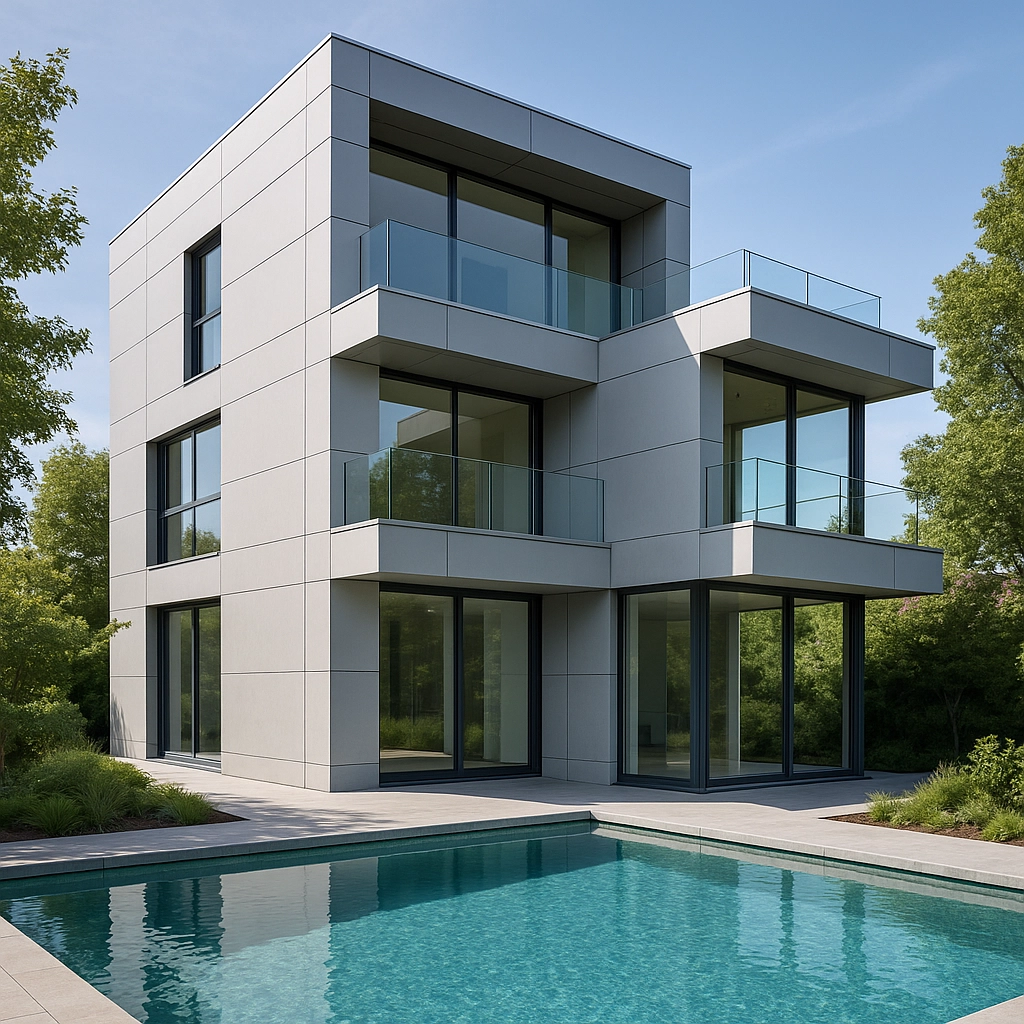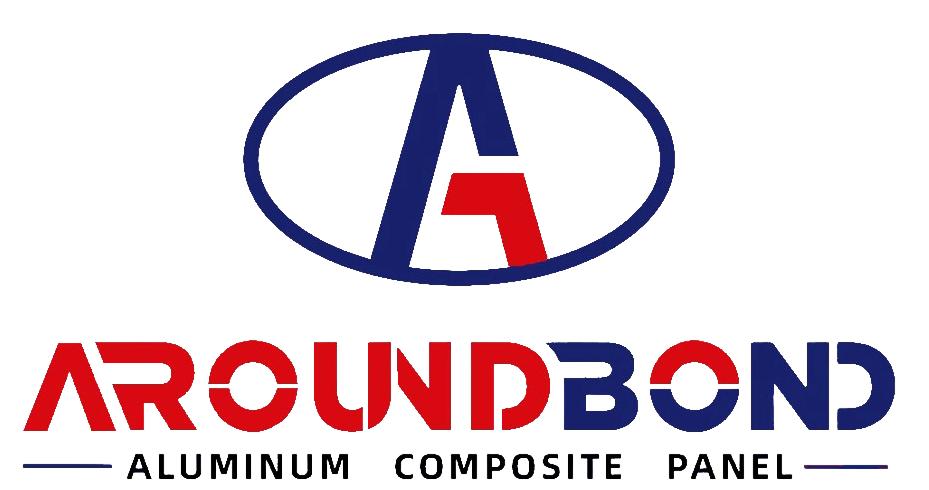Aluminum Composite Panels (ACPs) in Villa Interior and Exterior Design
Aluminum Composite Panels (ACPs) in Villa Interior and Exterior Design
Introduction
Aluminum Composite Panels (ACPs), also known as aluminum-plastic composite panels, have revolutionized modern architectural design due to their versatility, durability, and aesthetic appeal. Widely used in both commercial and residential projects, ACPs are increasingly favored in luxury villa designs for their ability to harmonize functionality with elegance. This article explores the applications of ACPs in villa interiors and exteriors, highlighting their structural advantages, design flexibility, and sustainability.

Aluminum Composite Panels
1. Composition and Structure of ACPs
ACPs are composite materials consisting of three primary layers:
Outer Layers: High-purity aluminum sheets (0.2–0.5 mm thick) treated with coatings such as fluorocarbon (PVDF) for outdoor use or polyester/acrylic for indoor applications. These layers provide corrosion resistance and structural integrity.
Core Layer: A fire-retardant polyethylene (PE) or mineral-filled core, offering thermal insulation, soundproofing, and lightweight properties.
Protective Film: A removable film on the surface to prevent scratches during installation.
This multilayered structure ensures ACPs are both lightweight (3.5–5.5 kg/m²) and rigid, making them ideal for complex architectural forms.
2. Types and Surface Treatments
ACPs are categorized by usage, functionality, and decorative effects:
By Application
Exterior Panels: Minimum 4 mm thickness with PVDF coating for weather resistance (e.g., villa façades, roofs).
Interior Panels: Thinner (3 mm) with polyester coatings, suitable for ceilings, partitions, and decorative walls.
Specialized Panels: Fireproof (A/B1-rated cores), antibacterial, or anti-static variants for specific needs.
Surface Finishes
PVDF/Polyester Coatings: UV-resistant, available in metallic, pearl, or fluorescent hues.
Anodized and Brushed Effects: Mimic natural textures like wood grain or stone (e.g., rose gold, bronze).
3D and Mirror Finishes: High-gloss or embossed surfaces for contemporary aesthetics.
3. Advantages of ACPs in Villa Design
Lightweight and Easy Installation
ACPs are 50% lighter than solid aluminum, reducing structural load and simplifying installation. They can be cut, bent, or perforated using standard woodworking tools, enabling custom shapes for curved walls, arches, or artistic facades.
Durability and Weather Resistance
Outdoor Use: PVDF coatings withstand UV rays, acid rain, and temperature extremes, maintaining color for over 20 years.
Indoor Use: Moisture-resistant and easy to clean, ideal for kitchens, bathrooms, and high-traffic areas.
Fire Safety
Fire-retardant cores (PE with mineral fillers) meet A/B1 fire ratings, ensuring compliance with building codes.
Aesthetic Flexibility
From minimalist metallic tones to faux wood or stone finishes, ACPs adapt to any design theme—modern, rustic, or industrial.
Cost-Effectiveness
Compared to natural stone or glass, ACPs offer a premium look at a fraction of the cost, with lower maintenance requirements.
4. Applications in Villa Exteriors
Facade Cladding
ACPs are a popular choice for villa exteriors due to their sleek, seamless appearance. PVDF-coated panels resist fading and pollution, ensuring long-term curb appeal. For example, a silver-anodized ACP façade can create a futuristic look, while wood-grained panels blend with natural surroundings.
Roofing and Canopies
Lightweight ACPs reduce roof load while providing insulation. Perforated panels can be used for ventilated roofs or decorative sunshades.
Balconies and Gates
Anti-slip textured ACPs enhance safety on balconies, while laser-cut designs add artistic flair to entrance gates.
Landscaping Features
ACPs are used in garden screens, pergolas, and water-resistant outdoor furniture, combining durability with modern aesthetics.
5. Applications in Villa Interiors
Walls and Partitions
Feature Walls: Mirror-finished or 3D ACPs serve as focal points in living rooms or lobbies.
Moisture-Resistant Panels: Ideal for bathrooms and kitchens, where anti-bacterial coatings prevent mold.
Ceilings
ACPs with sound-absorbing cores reduce noise in home theaters or open-plan spaces. Backlit panels create ambient lighting effects.
Custom Furniture
ACPs are molded into cabinets, countertops, or shelving. For instance, a brushed aluminum finish complements a high-tech kitchen, while wood-look panels warm up a study.
Staircases and Railings
Lightweight yet sturdy ACPs are used for floating stair treads or minimalist railings, often paired with glass or steel.
6. Installation and Maintenance
Installation Best Practices
Framing: Use aluminum or galvanized steel frames to prevent thermal expansion issues.
Ventilation Gaps: Allow 10–15 mm gaps between panels to accommodate material movement.
Adhesives: Opt for silicone-based sealants for outdoor joints to ensure water resistance.
Maintenance Tips
Clean surfaces with neutral
pH cleaners to preserve coatings.
Inspect sealants annually to prevent moisture ingress.
7. Sustainability and Market Trends
China dominates global ACP production, accounting for 80% of output, driven by advancements in eco-friendly coatings and recyclable cores. The rise of “green” ACPs—such as panels with recycled aluminum or low-VOC adhesives—aligns with sustainable villa design trends.
Conclusion
Aluminum Composite Panels redefine luxury villa design by merging practicality with artistic potential. Their adaptability to indoor and outdoor environments, coupled with low lifecycle costs, positions ACPs as a cornerstone of modern architecture. As manufacturers innovate in eco-conscious finishes and smart coatings, ACPs will continue to shape the future of high-end residential design.


